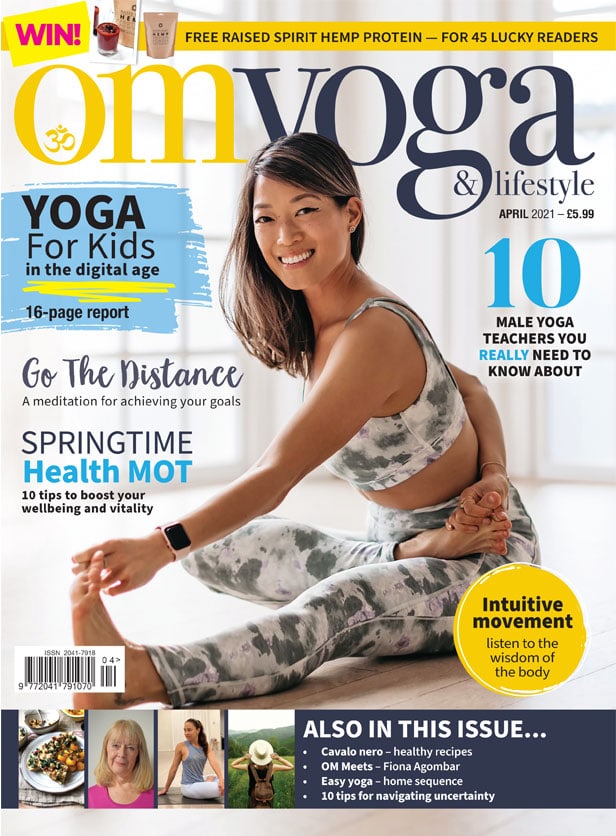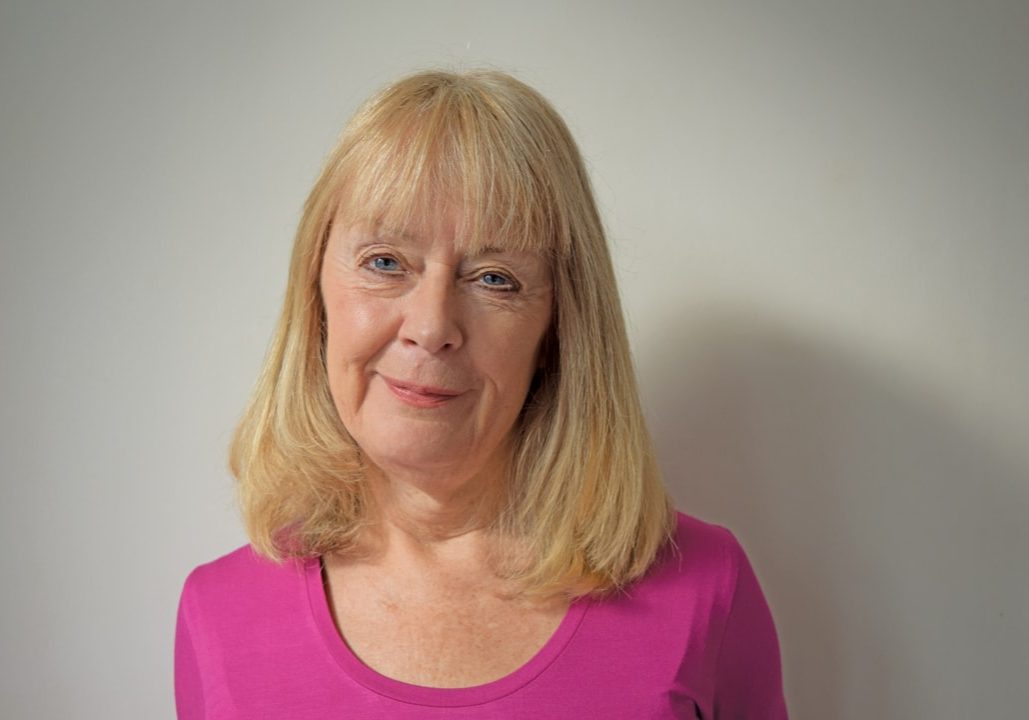
OM meets...
Fiona Agombar
How did you first get into yoga?
Like many people, I came to yoga because of health problems. In 1990 I had ME/CFS so severely I was hospitalised for three months, then in a wheelchair for two years. Angela Stevens, a local yoga teacher, set up a class for those of us with similar conditions. It was a revelation: I began to make a connection with my body and experienced the bliss of a still mind, albeit only momentarily. It was better than any drug!
What does yoga give you personally?
Yoga gives me a way to be still and relax when there is stress or even madness raging around me (and I have had some very challenging situations!). For example, I was a full-time carer for my husband Alan for nearly five years until recently. He had cancer and other health complications, which meant that I found myself on high alert for much of the time. Sometimes I would wake in the middle of the night in a panic, gasping for breath. Because of my practice, I knew to breathe slowly through the nose and focus on a longer exhalation. If I had to give one tip from this experience it is to bring consciousness to the breath, to slow everything down, and to check in with this several times a day. We live in stressful times and the breath is the best way to relax and come home to ourselves.
I got through this time by getting up early to do my practice. As well as keeping me grounded and sane, yoga helped me to see I had a Samskara (habit) of looking after everyone else except myself, so I realised I needed to work on more self-compassion. As a carer, I experienced despair, resentment, fear, burnout, constant anxiety but also incredible love. My practice supported me with leaning in and sitting with these emotions until they passed, although the love remains. I discovered that suffering always teaches us something if we are willing to go within and see the lesson without the temptation of distraction.
Any favourite yoga teachers?
The two yogis who inspire me the most are my friends Sarah Ryan and Leah Barnett. Both of them live from the heart as the following illustrates.
One day when I was really struggling, Sarah got into her car, drove for two hours, took me back to her house and literally nursed me while I rested, so I could then go back and look after Alan again. She did this a couple of times and I don’t think I would have got through without her kindness. She is a true yogini. Leah also came to visit and would pour soup down my throat and massage Alan’s shoulders when he was in pain.
Meanwhile, when I could, I was researching my book Yoga Therapy for Stress, Burnout and Chronic Fatigue Syndrome. The publisher kept delaying the publishing date – in the end it was put back by four years. The book is a complete work of heart because I lived through what I was writing about. I finished the manuscript around the same time that my husband died at the end of 2019, so I feel that the book and Alan are very connected.
Leah made fantastic contributions to the manuscript and Sarah read through many drafts and added wise comments. I will always be grateful to both of them because it couldn’t have been written without them. When I was writing, I had no idea the book would come out in the middle of a pandemic.
Luckily, my publisher gave me a couple of weeks at the proof stage in July 2020 to add in ideas that were relevant to the virus before it went to press, as I was just beginning to teach people with long-Covid.
How would you describe your own teaching style?
I originally trained with the Yoga for Health Foundation and then in the Krishnamacharya tradition so that informs how I teach. I would say that I am not so interested in asana or anatomy and physiology. I am far more fascinated by prāna (energy) and how we get that to flow effectively around the body.
So I use quite a lot of mantra, simple pranayama, deep relaxation and nyāsa (hand gestures and touch). I combine this with slow somatic practices such as exploring the relationship between the body and the floor, because the people I work with are very often not in their body (this has been a work in progress for me too!). At heart, I am a non-dualist concerned with freedom and truth…and that is what yoga means to me.
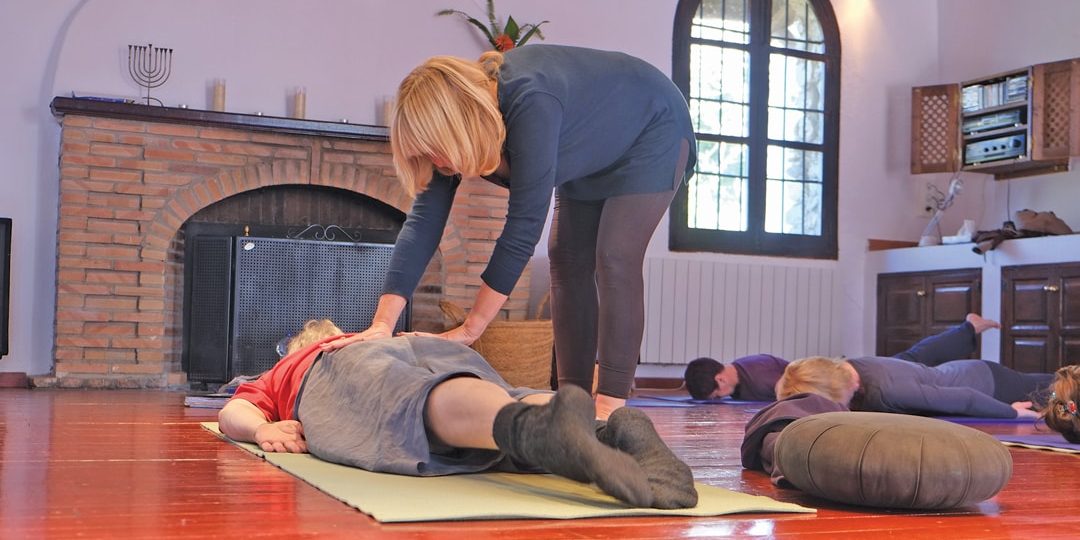
How have you adjusted to teaching online?
Zoom has completely changed my teaching because it gives accessibility to those who would be too ill to come to a yoga class. Some of my students even practice from their beds. I run two classes a week for fatigue conditions including long-Covid and ME. These are payable by donation, as many are on benefits. So, at the age of 65, I find myself quite busy and am currently trying to cut back on some of my other teaching! I want to eradicate the idea of being ‘busy’ or ‘ambitious’ as to me, these are concepts that oppose yoga.
What are your plans going forward?
Moving forward, I am recording some online training via Yoga Teachers Forum with Sarah Ryan. These are for teachers who want to know more about working with chronic fatigue conditions, including long-Covid, which unfortunately is a growing problem. (The recordings will be available to buy from mid-April.) The question I am asked most is: ‘Is long-Covid the same as ME/CFS?’ Essentially the fatigue part of it is yes, because we are talking about a post-viral condition. This kind of fatigue describes an extreme exhaustion that fluctuates with periods of relapse and remission. There are other symptoms too and with long-Covid, we may be helping people to learn to breathe again. In Western terms, fatigue can be explained as a challenge to the mitochondria. In yogic terms we are looking at the restrictions to the flow of prāna.
But it’s important to remember in yoga we are actually working with the individual and not the disease. We also have to understand the environment that we find ourselves in because yoga doesn’t see us as separate from that. Our culture – a capitalist patriarchy – doesn’t really support recovery from severe fatigue. We are expected to be gritty, or to push and drive through without taking breaks or proper rest. This is because taking time out is often equated with being lazy and unproductive and we are not valued unless we are ‘doing’.
Because of this, historically, people with ME have suffered from terrible prejudice. Their experience has been denied, they have been called malingerers and they have been gaslighted. I am hoping the pandemic will change things as we work out our true priorities.
Any advice for new yoga teachers just starting out?
Do the best course you can and take the time to do a proper qualification. If you just do a ‘teach yoga in a month’ or any of the quick unaccredited courses, you will end up paying more because you will feel inadequately prepared.
What do know now that you wish you’d known when you started out?
That the best way to teach is to keep it really simple and not talk too much. And to never ever play background music – yoga is about leading us to silence.
Any tips for students new to yoga?
Shop around until you find someone that you like. Just because you don’t resonate with a particular teacher doesn’t mean you won’t like yoga. All teachers are different.
What do you say to people who feel they can’t do yoga because they’re too old, too inflexible etc?
TKV Desikachar sums it up beautifully in The Heart of Yoga: ‘If you can breathe, you can do yoga.’
It’s so sad that these days there is this narrative in which yoga is perceived as some kind of cool gymnastics – or whatever looks good on social media. My teacher says this is cultural appropriation. It’s our Western obsession with what the body looks like. It’s about our infatuation with the material (prakrītī rather than purusha). Personally, my practice these days is chanting which has led to amazing transformation. Ultimately, for me, yoga is a spiritual way of life which helps us to realise our true nature. If we see yoga in this way, we understand that it’s available to everyone.
What do you do when you're not doing yoga?
At the moment I am spending lockdown with my mother in Hampshire and teaching from her sitting room – there is a very loud 70s carpet which I cover with a duvet! She has horses so I am enjoying being with them. I am hoping to get back to Spain to live there this summer, as I have residency, which I managed to organise before Brexit. My dog died last year – a month before my husband – so I am hoping to get another one (but probably not another husband!). I love nature, walking, travelling and reading, although I have Lyme Disease so I have to pace myself. I recovered from ME in 2004 but was bitten by a tick in 2011 when I was teaching in Turkey, so I have some fatigue issues again. I’m sure I got Lyme because I still have lessons to learn!
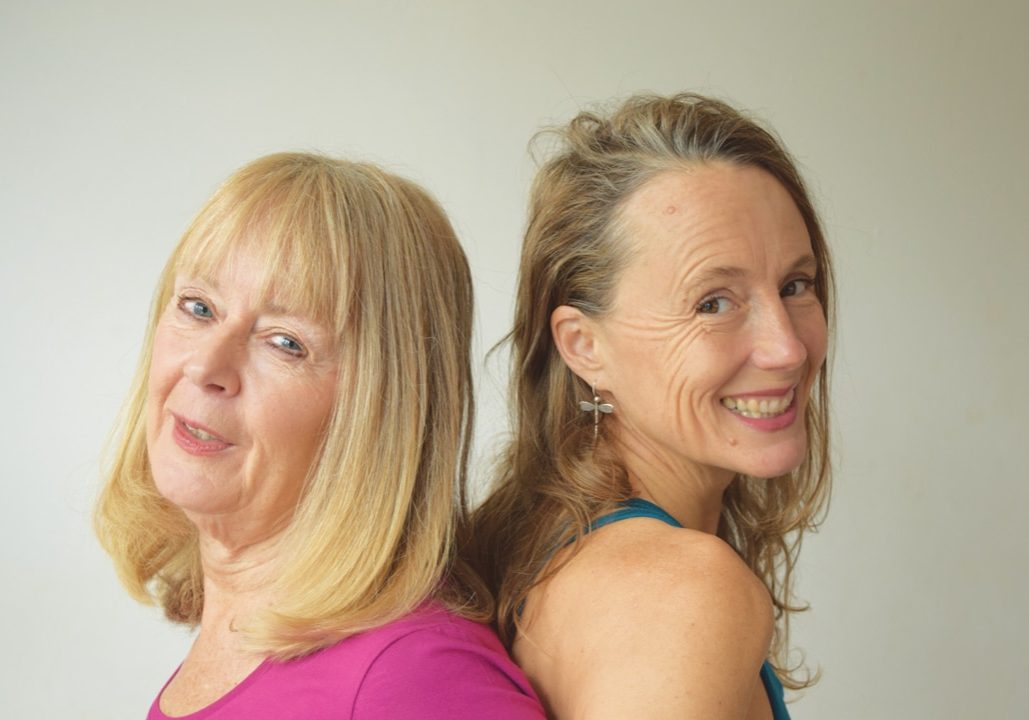
Any tips for incorporating yoga into ordinary, mundane activities?
For me it’s all about the breath together with being mindful and present in the body. So, several times a day, I check in with my breath and feel the connection of my body with the present moment. I recommend this to my students, along with the concept of taking micro breaks and resting between activities. Additionally, I believe everyone should lie down once a day and practice a deep relaxation such as yoga nidra, which is especially important during these stressful times. We need to help our sympathetic nervous system to calm down and to feel safe and relaxed whenever possible. The world would be a better place if we all took our relaxation seriously!
Anything to say about diversity in yoga?
Yoga is for all. It’s up to yoga teachers to welcome everyone and for us to educate ourselves. I used to see some ageism in yoga because on social media it’s all about what you look like and how flexible you are. But I think things are changing and the wisdom of the elder is now more respected.
Also, after the murder of George Floyd, I spent time reading books such as ‘Why I’m no longer talking to White People about Race’ by Reni-Eddo-Lodge and ‘Me and White Supremacy ’ by Layla F. Saad. I’ve also followed some online teachers of colour such as Lama Rod Owens – a Buddhist Lama. It’s really opened my eyes to my own privilege and taught me to see the world from another perspective. We may be ‘othering’ someone without realising it. It’s too easy to make the mistake of thinking we are not racist when at some subtle level we are giving offence. We need to understand racism and call it out. For yoga teachers, this is particularly important because we are teaching about peace and oneness and need to embody this from our hearts.
MY TEACHER: DR KAUSTHUB DESIKACHAR
In the last year I have been studying under Dr Kausthub Desikachar, after a break of eight years. He is the son of TKV Desikachar and the grandson of Krishnamacharya. It’s public knowledge that he abused his position and he lost most of his sangha in 2012. I was furious with him at the time, especially as a friend of mine was involved. I find him completely different now and I think forgiveness – if someone is genuinely sorry, which he is – is important. Others may judge me for this but it’s my choice and I find that Kausthub has developed much humility. He was cast out into the wilderness because of his behaviour and this has caused him to dig deep which comes across in his teaching. He is also an extraordinary communicator. Because of the pandemic I have been lucky enough to have access to some of his courses on Zoom. I also have a one-to-one with him twice a year and the daily mantras he gives me have changed my life for the better in many ways.
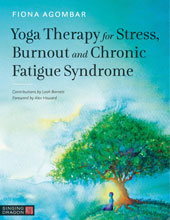
For more information on Fiona Agombar’s classes for fatigue and her online training for teachers (recordings available in April) plus some free downloads visit: fionaagombar.co.uk
OM readers can get 20% off Yoga Therapy for Stress, Burnout and Chronic Fatigue Syndrome when ordering from the publisher’s website (singingdragon.com) with the code BURNOUT20


